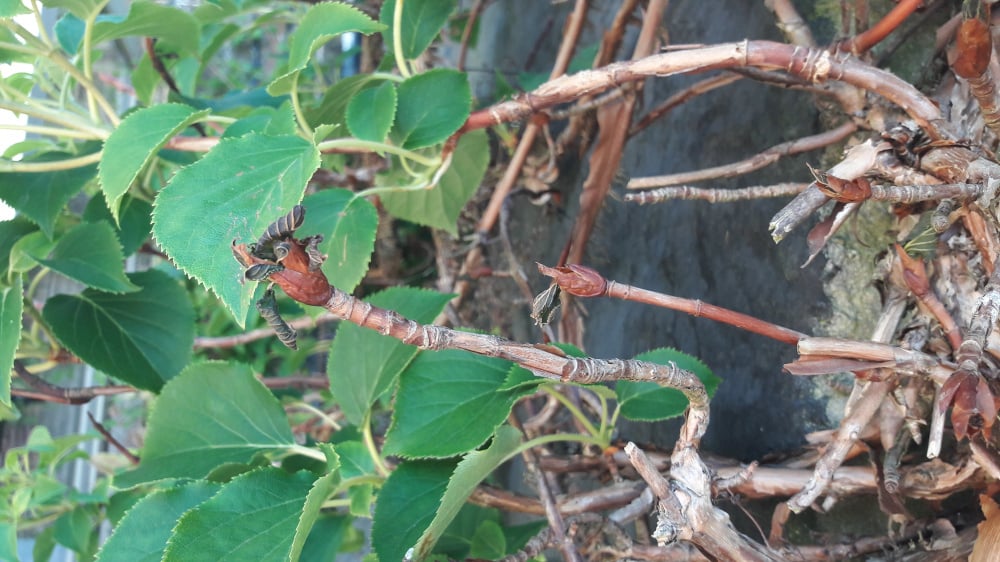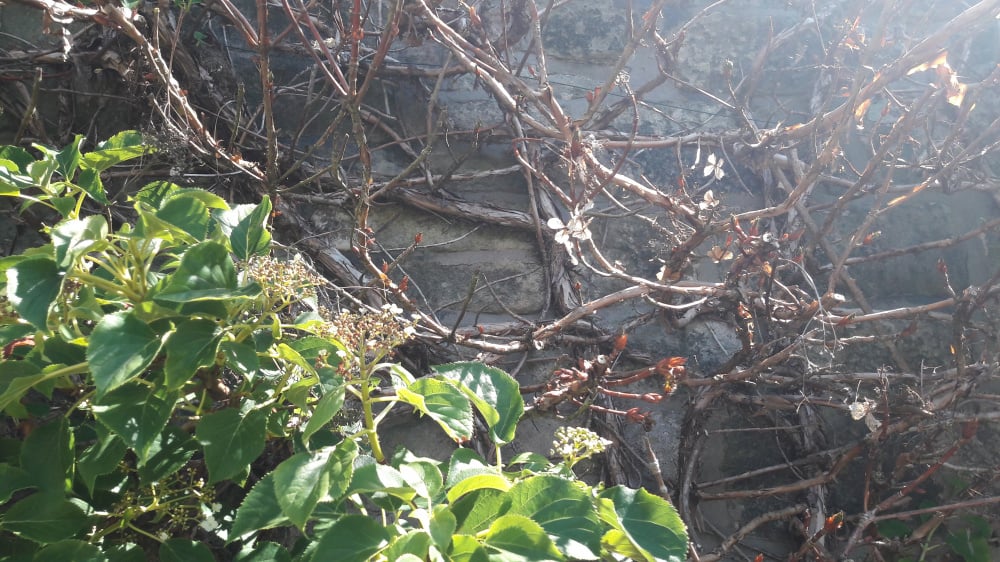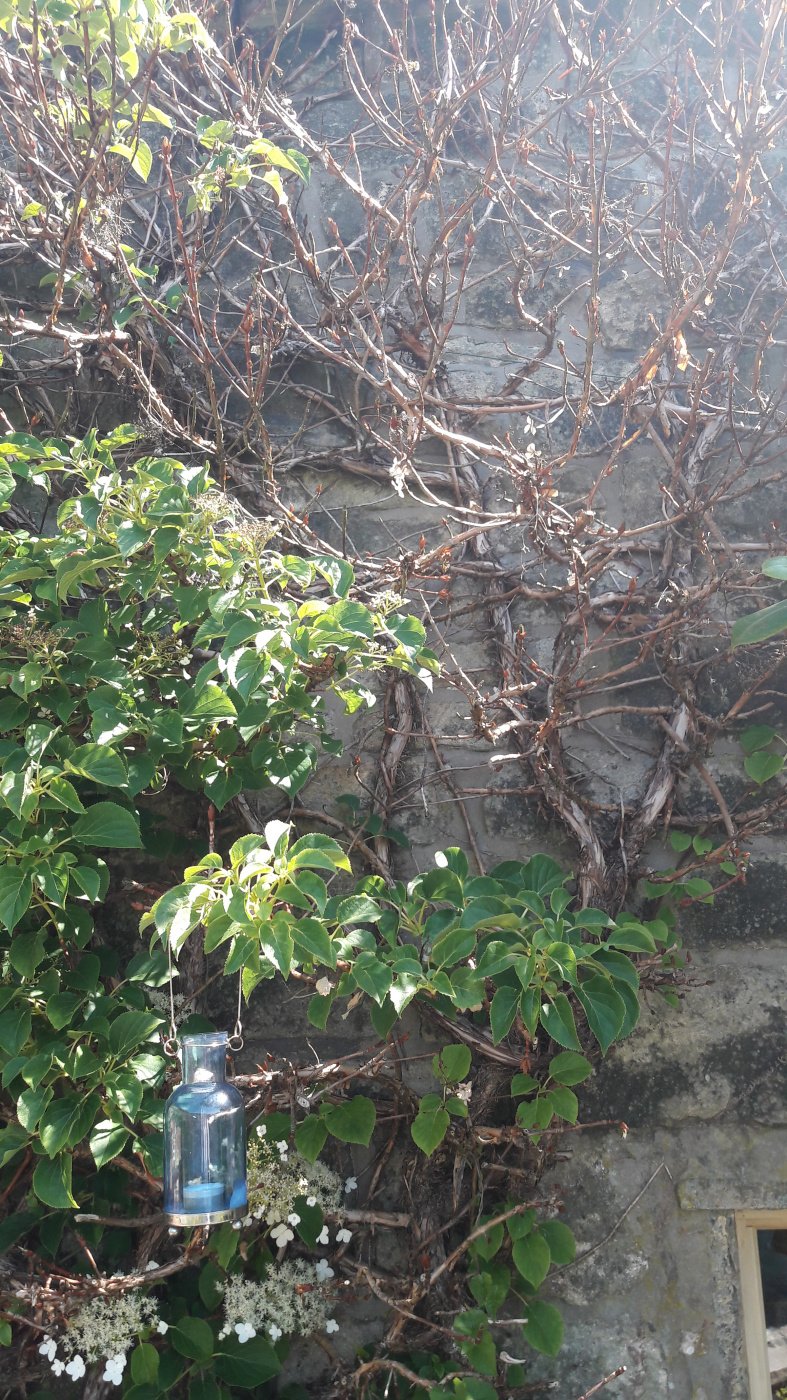This Forum will close on Wednesday 27 March, 2024. Please refer to the announcement on the Discussions page for further detail.
Climbing Hydrangea failing to leaf
I have a mature climbing hydrangea on the west wall of my home. I inherited it from the previous owner and for 3 years it bloomed beautiful. Last year we had some slabs cut in April in the garden and the dust got on to the leaf buds & young leaves. That year it didn't flower well and some of the leaves had brown tips: I put it down to the dust. This winter we gave it a prune, cutting back just one of the several mature stems where it was going in front of a window. This year, while some of it has come into leaf, I'd say almost half the plant has put out ripe buds only for them to fail to open properly - it is ad though they have dried or burned. Also, in among the healthy leafing, there are only 2 areas of flowering. The rest of the plant has either put out no buds, or the buds have dried and gone brown.
Was it that last frost at the start of May? Was it my hard November prune? Or something to do with slab dust? Or something else? I love this plant and would hate to lose it

 ...
...
Was it that last frost at the start of May? Was it my hard November prune? Or something to do with slab dust? Or something else? I love this plant and would hate to lose it


 ...
... 0
Posts
Often, even a mature plant can struggle if it's gone short of water during a long dry spell. They have a lot of top growth to support, and can often manage to produce buds of new foliage, but it then becomes difficult to sustain and produce that foliage.
I wouldn't worry about having pruned it either - that often helps rejuvenate these big plants, and in the long run, it'll have been beneficial. It would be worth cutting any dead stems/branches back to a healthy joint. Loads of water - by the bucket - every couple of days.
If there's a lot of other planting nearby, that's also competition for everything, so a general slow release feed each spring, and a mulch of compost or bark etc, after watering, will also help. West facing can still be quite a difficult aspect, depending on your local climate and conditions too, and especially when they have the wall too, as the foot of them can be very dry. They're generally at their best on north or east facing sites.
If it's any consolation - there's been lots of queries this year on the forum re H. petiolaris - all with the same sort of problem
I live in west central Scotland - not where that photo is...
Thanks again so much!
Just do your best with whatever you have too. Always harder if there's other planting, but even a little layer every so often can pay off, after you get some moisture back into the soil. Hopefully, it'll pick up, especially of the weather cools down a little bit.
Even if you get some good rainfall, it may not get right in where it's needed, so just keep an eye on it for a while
I live in west central Scotland - not where that photo is...
They're generally quite easy plants in the right site and conditions. At the age it is, it may well be getting to the end of it's life though.
I live in west central Scotland - not where that photo is...
My problem is almost identical to Deborah's from 2020. I actually have two. Separated by around 12 feet in separate beds. They face WNW. Roots get lots of shade. Leaves obviously get a lot of sun.... but for the previous 8 years they grew great. I said was was 40... but may be closer to 30. I've been here 10 year, and given her size I can't image she didn't take 20 years for that to occur. So I estimate she must be at least 30.
They both grow up the wall and have been trained grow into a fence around my front courtyard. They are beautiful. The larger of the two covers approximately 2/3rds of the leafing area.
Last year it was very dry early in the spring. Because they have historically been so low maintenance, I didn't really worry too much about the dryness until a section of my larger climbing hydrangea didn't leaf out. The vine itself seems ok... no evidence of rot, rust, fungus or anthracnose. The area that failed to leaf is around 1/3 of the larger vine. The rest looked ok although the leafage is slightly yellow and there was some evidence of stunted growth at the far edges. The section in question did not leaf out last season.
In response, I obviously watered. I monitored with a moisture meter for rest of summer. I also determined the pH was somewhat high.... 7.5-8.0. In late spring last year, I mixed in some fresh soil with 10-10-10. I also mixed and watered in Epsoma organic de-acidifier (for pH) and Doctor Iron (for yellowing from presumably chlorosis) monthly through out the summer and fall. The de-acidifier impacted the pH a little... it was more like 7.25 by summer end. But I was pleased with that given I'd been very conservative with the amounts I used.
My plan for this spring is to make sure it starts out the season appropriately moist an monitor that closely. I'm going to fertilize in a couple weeks with 10-10-10. I also think I'm going to apply about 1/3 pound of ground sulfur when I fertilize.
I'd appreciate your insight on this situation being similar to Deborah's and particularly welcome your advice on my intended plan for this spring.
Thanks!!!!
It suggests the soil isn't right - too dry and not enough organic matter. Adding compost, manure, leaf mould etc is what helps the soil. Regular mulching - as long as the soil is moist first, is also highly beneficial, as it helps with that moisture retention as well as improving the soil. Bark can be useful too. A slow release general fertiliser in spring is fine -BF&Bone for example, but other than that they just need decent soil and moisture. They're not that fussy re soil pH either, as long as it isn't too extreme in either direction.
Once established [a couple of years or so] they grow quite rapidly in the right conditions [as above] so they'd be covering fairly large walls well after around ten years or so. You've not said what sort of size and spread they are, but you may have to prune them back a bit more often if your conditions mean they're struggling to get the size they normally would get. Two plants 12 feet apart is quite a lot, even if they're in separate beds, and you haven't said what size the beds are, or what they're like - other planting etc. A photo or two would be very helpful.
If they're planted too close to the wall, that can also be a problem. It's a common mistake with climbers of all kinds, as wall footings tend to be much drier than the soil slightly further away. Consistently dry spells in spring, coupled with less than ideal soil, means they can't easily support the higher growth, so that gets shed. It happens with all sorts of shrubs too - they'll shed buds/flowers and/or foliage to save the bulk of the plant.
If you have to water, it needs to be thorough - a bucketful right in at the base every few days, not a sprinkle every day. The latter encourages roots to stay nearer the surface when you want the opposite, so that the plant can then maintain itself in less than ideal weather.
I live in west central Scotland - not where that photo is...
I'm not sure if you're even in the UK, which can also make a huge difference to advice.
Photos are always helpful.
I live in west central Scotland - not where that photo is...